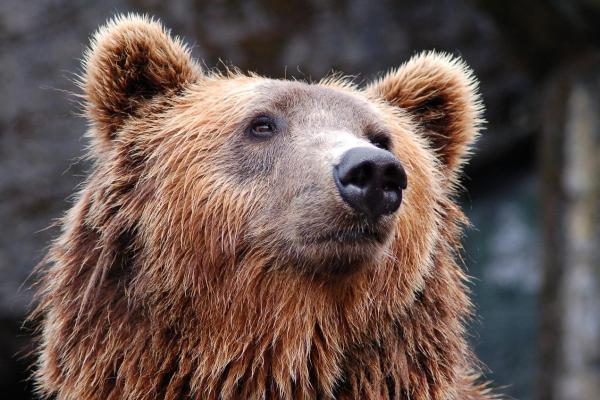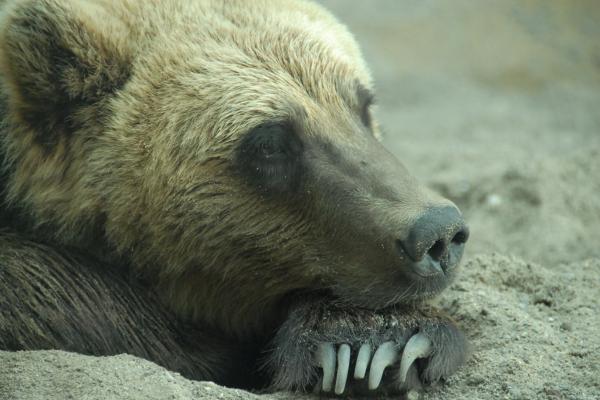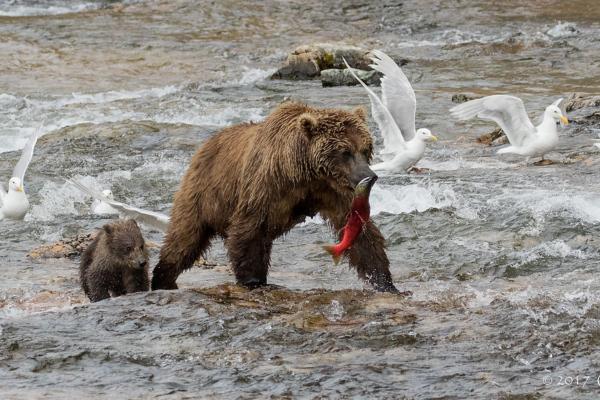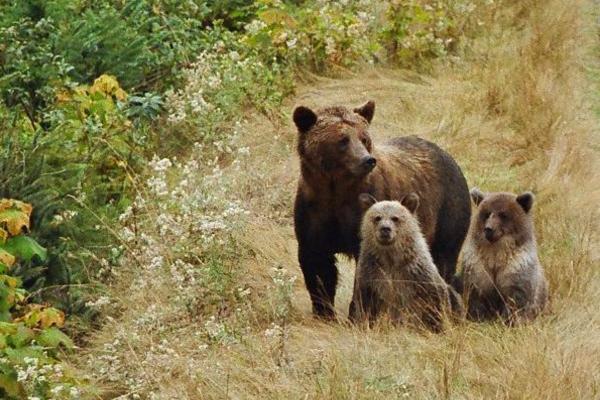The grizzly bear (Ursus arctos horribilis) is one of the most famous subspecies of the brown bear. It holds a significant place in popular culture, inspiring legends, animated characters, and even plush toys. But how well do you really know this forest giant? Despite its seemingly cuddly appearance, the grizzly bear is a wild and powerful predator. In this article, we explore the grizzly bear’s characteristics, diet, reproduction, and why it is considered one of the most dangerous bears in the world.

Characteristics of the Grizzly Bear
Habitat of the Grizzly Bear
Diet of the Grizzly Bear
Reproduction of the Grizzly Bear
Hibernation of the Grizzly Bear
The grizzly bear is a subspecies of the brown bear, identifiable by its brown fur with white-tipped hairs on its back and shoulders—giving it the "grizzled" appearance from which it gets its name.
Small, rounded ears
A prominent shoulder hump, which grows more noticeable with age and helps distinguish it from other bear species
Claws up to 10 cm long, longer than those of other brown bears, used for digging and hunting
Body length approximately 2 meters
Solitary and territorial behavior
Capable climber and runner, reaching speeds up to 50 km/h
Lifespan up to 26 years in the wild, with females generally living longer
While powerful, it is not the most dangerous bear; polar bears (Ursus maritimus) are considered more formidable
Attacks on humans are mostly due to territorial defense; habituation to humans has increased potential risks

Grizzly bears inhabit the Nearctic and Palearctic regions, ranging from forested mountains to ice fields, tundras, alpine meadows, and coastal areas. They prefer open habitats and are primarily found in North America—from Canada and Alaska down to parts of the United States. Historically, their range extended to Mexico, but they disappeared from that region by the 1960s.
Although classified as carnivores, grizzly bears are opportunistic omnivores. Their diet includes both animal prey and a variety of plants, fruits, nuts, and insects. They often supplement their diet with eggs and honey.
Common prey and foods include:
Moose (Alces alces)
Canadian deer (Odocoileus spp.)
Small mammals, insects, larvae, and worms
Salmon and trout, especially during spawning season when fish swim upstream
Diet diversity varies by location and seasonal availability. Grizzlies with more varied diets tend to grow larger.

Grizzly bears are solitary animals, coming together only during the summer mating season. Sexual maturity is reached around 5 years of age. They undergo internal fertilization and are viviparous, with a gestation period ranging from approximately 3 months to 250 days.
Cubs are typically born during the mother’s hibernation in the den. Mothers nurse and protect their young until the end of hibernation, after which the cubs begin independent life. Twins are common, and maternal care lasts about two years, teaching the cubs survival skills. Females do not mate during this period and usually reproduce once every three years.
Hibernation is a crucial survival mechanism that allows grizzlies to conserve energy during harsh winters when food is scarce. They remain in a lethargic state for 5 to 7 months.
Before hibernation, they consume large amounts of food to build fat reserves. As snow approaches, they retreat to dens and begin hibernating, during which they neither eat, urinate, nor defecate. Unlike deep sleep, grizzly hibernation involves periods of restfulness with some awareness.
Female bears give birth during hibernation and care for their cubs inside the den. Insufficient nutrition prior to hibernation may cause miscarriages or abortion.
Physiological changes during hibernation include a drop in body temperature and heart rate.

For more information on hibernation and animals that hibernate, please check our related articles.
The grizzly bear is a key predator and an iconic species of North American wildlife. Understanding its biology and behavior is vital for conservation efforts and fostering coexistence between humans and wildlife.
Bibliography
Ballenger, L. (2002). Ursus arctos. Available at: https://animaldiversity.org/accounts/Ursus_arctos/
animal tags: grizzly bear
We created this article in conjunction with AI technology, then made sure it was fact-checked and edited by a Animals Top editor.